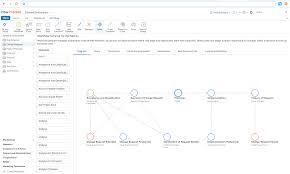Software development tools are a vital part of any software development process. They are used to create, debug, maintain and optimize software applications. They come in many forms, from integrated development environments (IDEs) to code editors and automation tools. The right tools can help developers write better code faster, reduce errors and increase productivity.
An IDE is a comprehensive set of tools for developing software applications. It usually includes an editor, compiler, debugger and other tools needed for application development. IDEs are designed to streamline the development process by providing access to all the necessary components in one place. Popular IDEs include Visual Studio Code and Eclipse.
Code editors are used to write and edit source code. They provide features such as syntax highlighting, autocompletion and debugging capabilities that make coding easier and more efficient. Popular code editors include Sublime Text, Atom and Visual Studio Code.
Automation tools are used to automate repetitive tasks such as testing, building and deploying code. They can save developers time by automating tedious tasks so they can focus on more important tasks such as coding or debugging application logic. Popular automation tools include Jenkins, Puppet and Chef.
Version control systems are used to manage changes in source code over time so that developers can easily track changes in their applications. They also allow multiple developers to work on the same project simultaneously without conflicts or data loss. Popular version control systems include Git, Subversion and Mercurial.
In conclusion, software development tools play an important role in the software development process by helping developers create better applications faster with fewer errors. Choosing the right tools for your project is essential for success so it’s important to do your research before committing to any particular toolset or platform.
2. How can software development tools help streamline my workflow?
3. What advantages do software development tools offer over traditional methods?
4. What types of software development tools are available?
5. How can I get started with using software development tools?
- What is the best software development tool?
- How do I learn to use a software development tool?
- What are the most popular software development tools?
- What are the advantages and disadvantages of different software development tools?
- How can I get started with a new software development tool?
What is the best software development tool?
The best software development tool depends on the specific needs of the project. Popular options include Visual Studio, Eclipse, Xcode, IntelliJ IDEA, and Android Studio.
How do I learn to use a software development tool?
- Read the documentation: Most software development tools come with documentation that explains how to use the tool. Take the time to read through it and become familiar with the features and functionality of the tool.
- Take an online course: Online courses are a great way to learn how to use a software development tool. Many courses are designed specifically for beginners, so they can help you get up to speed quickly.
- Watch tutorial videos: Tutorial videos are another great way to learn how to use a software development tool. They can provide step-by-step instructions on how to use the tool and can be especially helpful for visual learners.
- Ask questions: If you’re stuck or have a question about using a software development tool, don’t be afraid to ask for help! There are many online forums, such as Stack Overflow, where you can ask questions and get answers from experienced developers who have used the same tool before.
What are the most popular software development tools?
- Git
- IDEs such as Visual Studio Code, IntelliJ and Eclipse
- Agile project management tools such as JIRA and Trello
- Automation tools such as Jenkins and Selenium
- Containerization tools such as Docker and Kubernetes
- Programming languages such as Python, Java and JavaScript
- Build tools such as Maven and Gradle
- Database technologies such as MySQL, MongoDB and PostgreSQL
- Testing frameworks such as JUnit, TestNG and Cucumber
- Cloud platforms such as AWS, Azure, Google Cloud Platform
What are the advantages and disadvantages of different software development tools?
Advantages of Different Software Development Tools:
1. Automation: Software development tools automate many tedious tasks, such as code generation, testing, debugging, and deployment. This saves time and reduces the chances of errors.
2. Productivity: Using software development tools can help developers to be more productive by providing them with powerful tools that can help them write better code faster.
3. Quality: By using automated testing and debugging tools, developers can ensure that their code is of a high quality before releasing it to the public.
4. Compatibility: Many software development tools are compatible with different programming languages and operating systems, making it easier for developers to build programs that are cross-platform compatible.
Disadvantages of Different Software Development Tools:
1. Cost: Many software development tools are expensive and require a significant upfront investment from companies or individuals who want to use them for their projects.
2. Complexity: With the wide range of features offered by software development tools, it can be difficult for developers to learn how to use them effectively without extensive training or experience in the field.
3. Over-reliance: When developers rely too heavily on software development tools, they may become less creative in their approach to problem solving, as they rely on the tool itself rather than their own skills and knowledge.
How can I get started with a new software development tool?
- Research the tool: Learn about the features and capabilities of the tool to determine if it fits your needs.
- Download and install: Download the software from its official website and install it on your system.
- Read tutorials: Read tutorials to get a better understanding of how to use the tool and its features.
- Experiment: Experiment with the tool by creating small projects or trying out different features to get a better feel for how it works.
- Ask questions: Ask questions in forums or on social media sites if you have any doubts or queries about using the software development tool.




